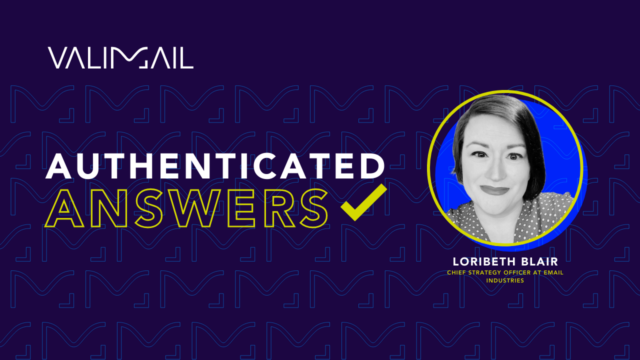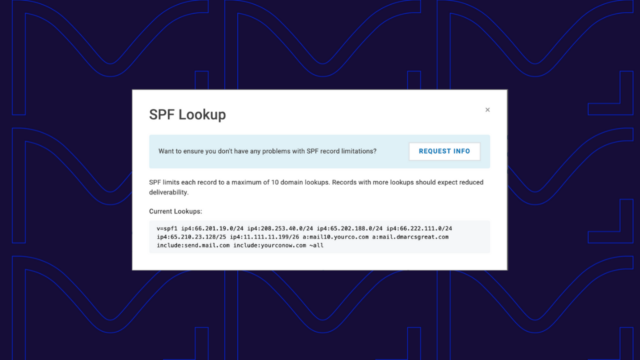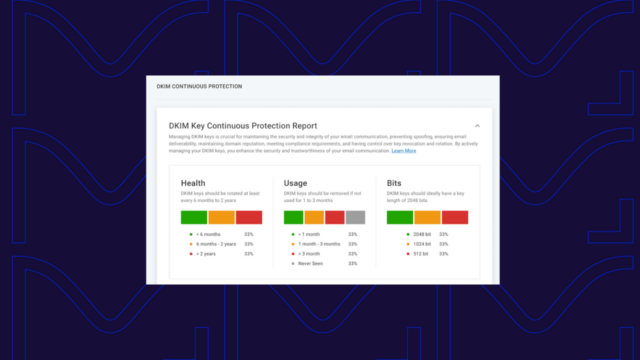Many companies already use a Secure Email Gateway (SEG) as a bulwark against the ever-increasing waves of email-based phishing and malware attacks. So if you’ve got an SEG already, why would you need to add email authentication to the mix?
The reason is straightforward: Each technology addresses different vulnerabilities. The phishing problem is massive enough — and varied enough — that you need both.
91% of all cyberattacks start with a phishing email. Under the surface of that figure, though, lurks the fact that ⅔ of phishing attacks use impersonation.
Some of those impersonation attacks are especially devious business email compromise (BEC) attacks because the email messages contain no malware and are virtually indistinguishable from messages sent by your boss or your coworkers—right down to the email address in the From: field.
With no malware and no suspicious links, there’s nothing for SEGs to scan.
But email authentication can ensure that the sender really is who they claim to be, while blocking all imposters trying to pose as a user of your domain name.
This is why the best defense is a layered defense, including both SEGs (to stop malicious content before it reaches your inboxes) and email authentication (to ensure that no one can spoof your executives, employees, or brand).
What are Secure Email Gateways (SEGs)?
SEGs are a familiar technology and have been in use for two decades. SEGs offer protection against phishing threats and also against spam and email-borne malware.
They do this by offering a combination of algorithmic and heuristic analysis to weed out the “bad actors” among incoming emails, ensuring that all (or most) of the inbound email reaching a company’s servers is legitimate.
URL link protection, sandboxing email attachments, and other techniques used by SEGs can help protect companies from many of these threats.
What is email authentication?
Email authentication is a newer component of the anti-phishing toolkit. At its core, authentication is focused on fixing email’s original sin: There’s no accurate way to tell who the sender of an email is. This enables a criminal to pose as your CEO, CFO, partner, spouse, friend, etc., tricking you into carrying out their desired (and nefarious) actions.
Email authentication involves an array of standards, including:
- Domain-based Message Authentication, Reporting, and Conformance (DMARC)
- Sender Policy Framework (SPF)
- DomainKeys Identified Mail (DKIM)
- Authenticated Received Chain (ARC)
- Brand Indicators Message Identification (BIMI)
Once correctly configured and set to an enforcement policy (a DMARC policy of p=quarantine or p=reject), email authentication blocks all emails that do not authenticate properly.
That means all emails: Not just inbound messages coming into your organization’s email servers, but any messages sent from anywhere in the world to anywhere else in the world. If they’re using your domain name and they weren’t authorized, those emails will be blocked.
This protects a company’s domain against phishing abuse (both inbound and globally), provides visibility and control over the email services employed by the company, and helps protect the brand overall from damage done by fraud.
SEGs vs. email authentication: What’s the difference?
A core security principal is to layer your defenses. That means deploying varying approaches to security in order to maximize the effectiveness of your overall defense.
SEGs and email authentication provide exactly this complementary, layered approach.
And while some SEGs do check and enforce the DMARC authentication policy of incoming emails as part of their filtering mechanisms, that’s as far as they go. They don’t configure or maintain email authentication for your domains nor do they monitor or digest DMARC reports.
In fact, authentication is a powerful complement to a SEG.
By combining these two approaches, a company benefits in several ways. One is by simply sharing authentication results (reporting and analytics) with each other. Email authentication feedback data, via DMARC aggregate reports, provides SEGs with additional data to rapidly update their databases and stop attacks that they may have otherwise missed.
Additionally, email authentication provides unique value that SEGs alone don’t. In addition to protecting your organization against BEC, it also protects against brand hijacking (messages sent to consumers, attempting to leverage your brand for malicious purposes), targeted spear-phishing messages aimed at impersonating executives.
And email authentication also protects the email sent by cloud services that use your domain.
The best email security is a layered defense
Domain spoofing is not the only email-based threat that companies face. For protection against viruses, Trojans, and other email-borne malware, SEGs are a terrific solution.
But for protection against the damage that fraudsters can do with spoofed email domains, email authentication is the answer.
That’s why a complete email security solution includes both an SEG and properly configured email authentication—with an enforcement policy.
Simplify your email authentication with Valimail
Email authentication is essential for protecting your brand and ensuring your emails reach your audience. However, the process of setting up and managing authentication protocols like DMARC, SPF, and DKIM can be complex and time-consuming.
That’s where Valimail comes in.
We simplify email authentication, making it accessible and effective for businesses of all sizes.
Valimail streamlines the setup and management of email authentication protocols. Our platform guides you through each step, from creating and publishing DNS records to monitoring and maintaining compliance. With Valimail, you don’t need to be an email security expert to protect your domain.
Our comprehensive integration capabilities mean that no matter which SaaS platforms you use, your emails will be properly authenticated.
Automation is at the heart of Valimail’s approach to email authentication. Our platform automates many of the routine tasks associated with managing DMARC, SPF, and DKIM, freeing up your time to focus on other important aspects of your business. From setting up DNS records to generating compliance reports, Valimail handles the heavy lifting.
Simplify your email authentication process and enhance your email security with Valimail. Whether you’re a small business or a large enterprise, our solutions are designed to meet your needs and help you achieve better email deliverability and protection.
We understand how important having a layered security is, which is why we partner with SEGs like Microsoft and Abnormal Security. With our combined solutions, customers can be protected from a range of email attacks.


